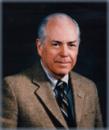
|
William H Harris, MD |
Profile of The Orthopaedic Career of William H. Harris, MD, DSc
During Dr. Harris’ 63 year career in Orthopaedic Surgery, he has consistently integrated the art and craft of musculoskeletal surgery with a deep commitment to the improvement of the science of the field, with special emphasis on improving total joint surgery, both clinically and developmentally.
Among levels of clinical improvement, he reported both the lowest sepsis rate and the lowest mortality rate ever published at that time for total hip replacement surgery. Among important concepts, he contributed strongly to the important new critical understanding that most osteoarthritis of the hip is caused by developmental abnormalities, not by a cartilage deficiency. His role in unraveling the mysteries of an entirely new disease “periprosthetic osteolysis” ranged from the initial demonstration of the molecular biology of this disease through establishing the mechanism of the generation of the tiny wear particles of polyethylene, followed by the initiating and directing the development of a highly crosslinked polyethylene which has virtually eliminated periprosthetic osteolysis worldwide from metal on polyethylene total hip replacements.
He made major contributions to the evaluation of and the quantification of results of hip surgery, allowing much more precise assessments of proposed improvements in designs, materials or techniques, to enable more accurate quantification of the vital distinction between change and progress.
In addition to the key work on identifying major features of the disease “periprosthetic osteolysis” and the prevention of that disease, his work has also reduced the risk of fatal pulmonary emboli and reduced the risk of loosening of components of THA. Moreover, the durability of THA has been greatly extended by his innovations.
His investigation contributed to new understandings in skeletal metabolism, to quantification of the pressure in articular cartilage in vivo in the human acetabulum, and to the field of human limb replantation.
He has been honored by receiving three Kappa Delta Awards (the highest award in North American for Orthopaedic Research) and an unprecedented 10 awards from the Hip Society. He was the first surgeon to receive The Lifetime Achievement Award from the Hip Society, the only American to receive the Lifetime Achievement Award from the Muller Foundation, and the first Lifetime Achievement Award as well as the first Honorary Membership in the International Hip Society (as well as being a Founding Member). He was a founding member and first president of the Hip Society and a founding member and president of the International Hip Society.
In 1969, he founded and then directed the Harris Orthopaedic Laboratory at the M.G.H. until 2004. He was Chief of the Arthroplasty Section of Orthopaedic Surgery at the MGH from 1974-2004, and was the Alan Gerry Clinical Professor of Orthopaedic Surgery at Harvard Medical School from 1997 to 2012.
Please see Profile of Harris Orthopaedic Laboratory and My First 50 Years of Orthopaedic Surgery.
| Home | Career Profile | CV & Bibliography | Lifetime Achievement Award Remarks | Harris Orthopaedic Laboratory | Publications | © 2013 William H. Harris. All Rights Reserved. |